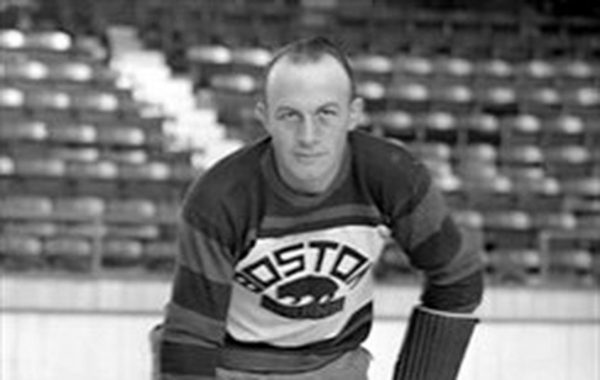
By: BNG Writing Staff | Follow us on Twitter @BlackNGoldPod
Behind NHL greats like Wayne Gretzky and Gordie Howe, Eddie Shore is one of the most-nominated MVPs in the entire league and did it before Gretzky or Howe ever took to the ice. As one of the first stars of the fledgling NHL, Eddie Shore exemplified many of the best qualities for a hockey defenseman… Including his propensity for violence.
Here we’re looking at the life and career of Eddie Shore and the impact he had on the NHL, particularly as a bruiser for the Boston Bruins, where he carried them to their first Stanley Cup. If you’re interested in more Stanley Cup action, you should check out Fanduel.com’s Stanley Cup betting odds.
Pre-NHL Career
Like many hockey players, Eddie Shore started his career at his chilly hometown on the plains of Saskatchewan. After playing for the Cupar Canucks for a time, Shore joined the Saskatchewan NHL and played for the Melville Millionaires. Together, they won the 1923-24 season senior championship for the province.
From there, he signed to the Western Canada Hockey League and played the 1925 season with the Regina Capitals. This didn’t go well, with the Capitals coming dead last across the entire league and fleeing to Portland soon after.
So, instead, Shore joined the Edmonton Eskimos. Having played a forward for his career so far, they converted him to a defenseman and nicknamed him The Edmonton Express. Unfortunately, this was in 1926, where the entire Western Hockey League collapsed.
Having joined multiple sinking ships over the last two years, this one turned out quite favorably for Shore. As players were getting sold off, the WCHL decided to send Shore to the NHL, to a little-known team called the Boston Bruins…
Starting In The NHL
Eddie Shore’s first year with the Bruins was quite eventful. During the 1925-26 season, the Montreal Canadiens had traded another player called Billy Coutu to the Bruins. During a practice, Shore provoked them by strutting in front of them several times. Coutu lost his patience, attacking Shore, and later they collided again. Shore’s ear was nearly ripped off while Coutu was knocked out. Shore took a dislike to anesthetic as they sewed the ear back in place.
During his rookie season, Shore hit 12 goals and made six assists, totaling 18 points and accumulating 130 penalty minutes. While he hadn’t become notorious yet, Shore was there when the Bruins won their first Stanley Cup in 1929.
Violence On The Ice
As the 30s set in, Shore would continue to be the center of violent interactions as part of the NHL. He was once challenged to a boxing match by a baseball player – Art Shires – but a baseball commissioner pulled their guy out after the NHL gave Shore the go-ahead.
The most notorious case of Shore’s violence, and what he is often known for nowadays, is when he ended the case of Ace Bailey of the Toronto Maple Leafs. After a confrontation, Shore approached Bailey from behind and took his feet out with his stick. Bailey fell to the ice with his head making contact with the ice first on his way down. Bailey was unconscious, convulsed, and had to have life-saving operations.
While violence is a staple of hockey, and back then, there were fewer rules for on-ice conduct, the most tragic part of this story is that Bailey had done nothing wrong. The previous confrontation was with King Clancy, and he thought he was swinging at Clancy when he delivered the blow.
Fortunately, Bailey would survive after a brief coma. Shore was suspended for sixteen games. Just a few months later, a benefit game was held for Bailey’s medical costs. The tournament raised $20,000 for the player, and the moment Bailey shook Shore’s hand was captured in a photograph.
Ending In The NHL
The next highlight of Shore’s career was the second time the Bruins won the Stanley Cup. As part of the 1939 season, the Boston Bruins faced the Toronto Maple Leafs. The Bruins won 4-1.
After winning another Stanley Cup, about ten years after his first Cup victory, Shore tried to retire. He did so by becoming a player-owner for the Springfield Indians. Soon the Bruins pestered him to return, offering an attractive $200 salary. The Bruins had lost defensemen to injuries, so they wanted to rely on an old bruiser.
Shore wasn’t thrilled about the deal. He played just four games before continuing to play for the Indians. He was then traded to the New York Americans in 1940 until his final game, where he joined the Americans to face the Detroit Red Wings on the ice.


Leave a Reply